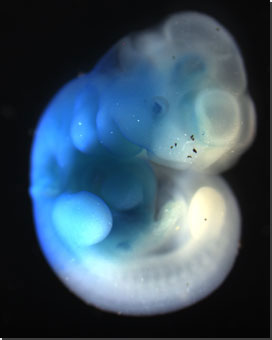Mice chip in to speed gene screens
 A new technique is allowing researchers to screen cells for mutations and diseases in months rather than years.
A new technique is allowing researchers to screen cells for mutations and diseases in months rather than years.
A team from The Rockefeller University in New York have developed a way to employ the natural process of RNA interference to block a gene's function and look for genetic material that may contribute to disease.
Traditionally, a genetic screen of a mammalian cell is hugely complicated and requires thousands of petri dishes and a long period of exposing cells to stress and non-physiological growth conditions.
Now the US researchers say they can effectively use a living mouse embryo as a petri dish – injecting it with short pieces of ‘hairpin RNAs’ to consolidate all the genetic information to be tested on a single site, which is far easier to grow and monitor.
Elaine Fuchs, a Rebecca C. Lancefield Professor says: “Previously, genome-wide screens were only possible in lower animals, such as flies, worms and yeast, where it is often difficult to assess the relevance to human disorders such as cancer,”
“We've now devised a technology where we can effectively treat the surface of living mouse embryos as a petri dish of cells, and carry out genome wide screens on mouse cells in their native environment in vivo.”
The team has successfully completed the first genome-wide screen of a mouse by injecting RNAs into 100 embryos, looking for code which may contribute to skin cancer growth. The Rockefeller University researchers were able to screen over 16,000 genes with just 100 litters of mice – they found around 200 genes which were specifically linked to oncogenic growth in the skin.
The findings re-affirmed several previous genetic links to skin cancer, but highlighted several more which are now to be the focus of further investigation.
Slobodan Beronja, an assistant member at the Fred Hutchinson Cancer Research Center said: “The greater the complexity of the drug treatment, the greater its success. If you attack several genes, it's more effective,”
“The next step is to validate the list of 200-plus genes and narrow it down to the true candidates for drug therapy. Mllt6 is one that needs further exploration, but we have shown that this method of genetic screening is cheaper, easier and more informative. It was a risky undertaking that Dr. Fuchs entrusted me to take, and it paid off.”








 Print
Print